Abstract
1. Changes in the levels of phosphocreatine (PCr) and ATP during relaxation after tetanic contraction have been observed and compared with the heat + work production during the same period.
2. The results were the same using 2 sec or 15 sec tetani and using 15 or 30 Hz stimulation.
3. During relaxation the mean chemical change (of ATP + PCr) was -0·105 ± 0·078 μmol/g muscle (n = 53). This change is less than would be required to explain the heat + work produced.
4. The PCr split during both 2 sec and 15 sec tetani (up to the last stimulus) was less than would be required to explain the heat + work produced. This confirms previous experiments.
5. It is concluded that the discrepancy between chemical change and heat + work production does not diminish during relaxation but actually increases.
Full text
PDF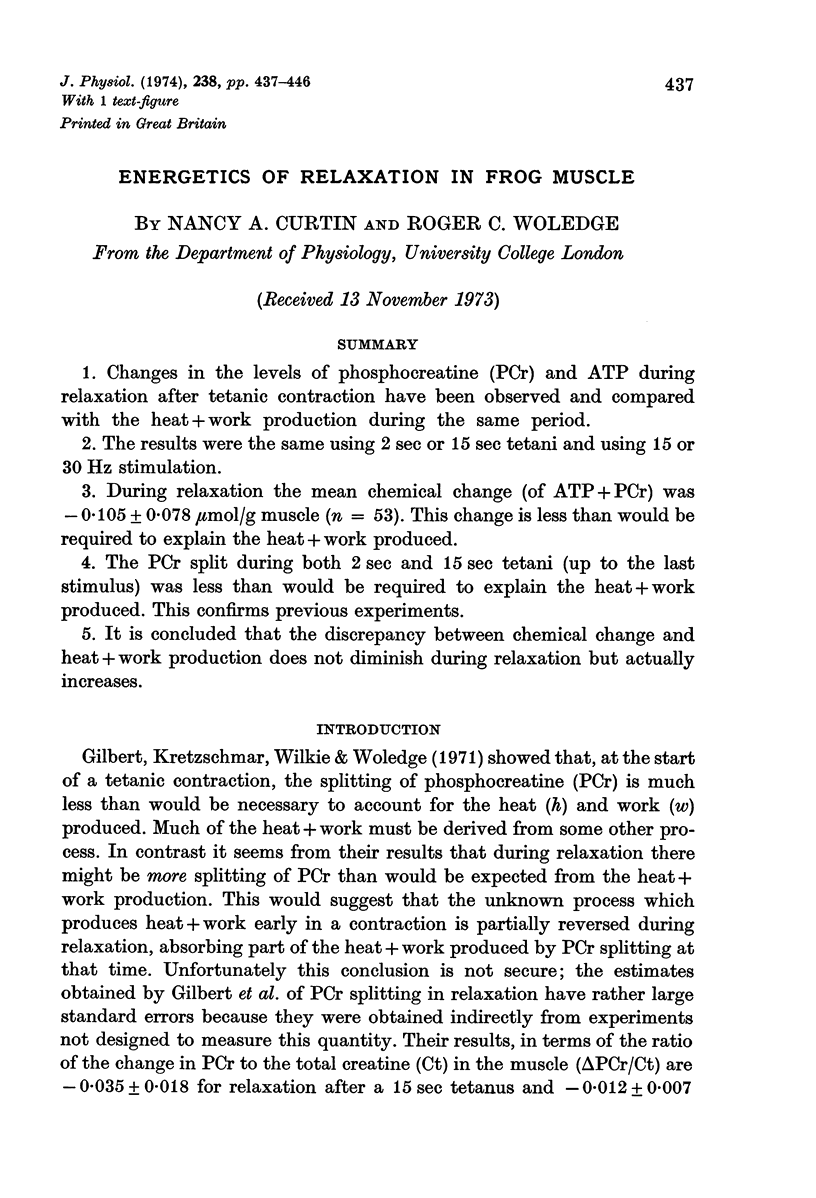
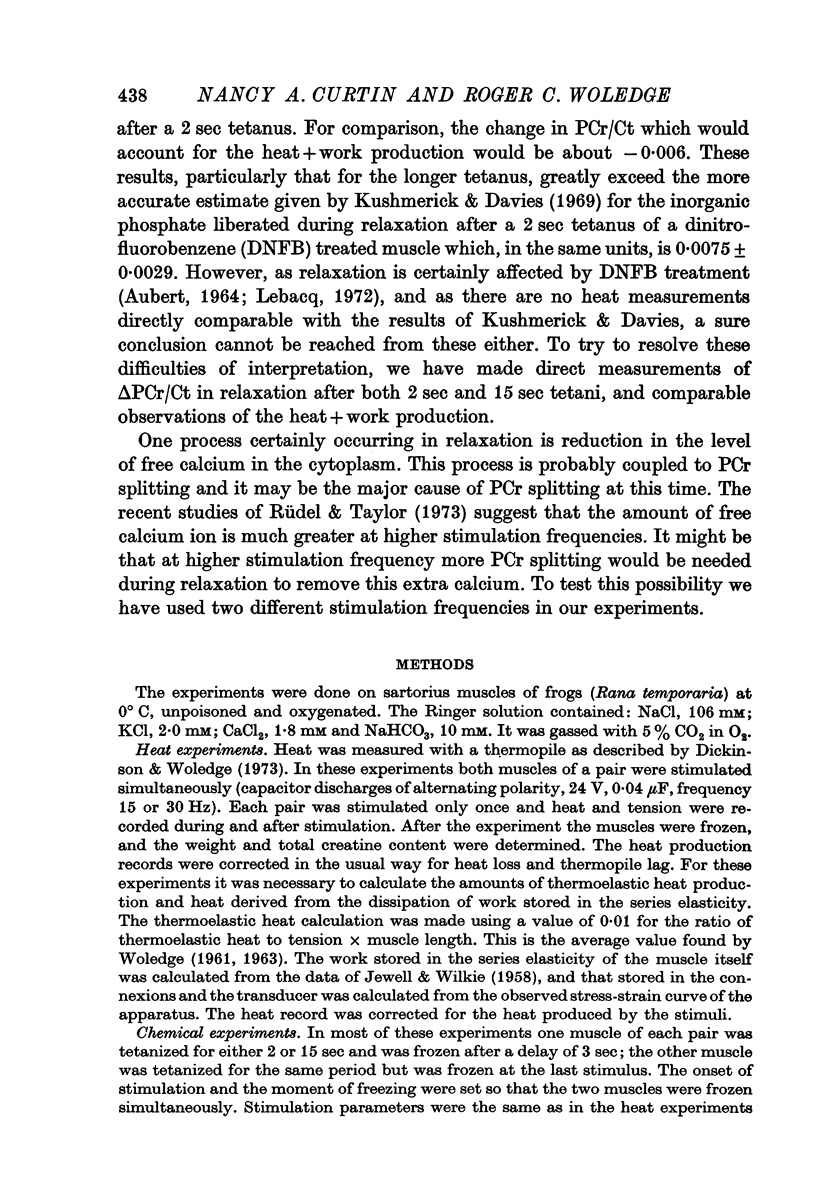
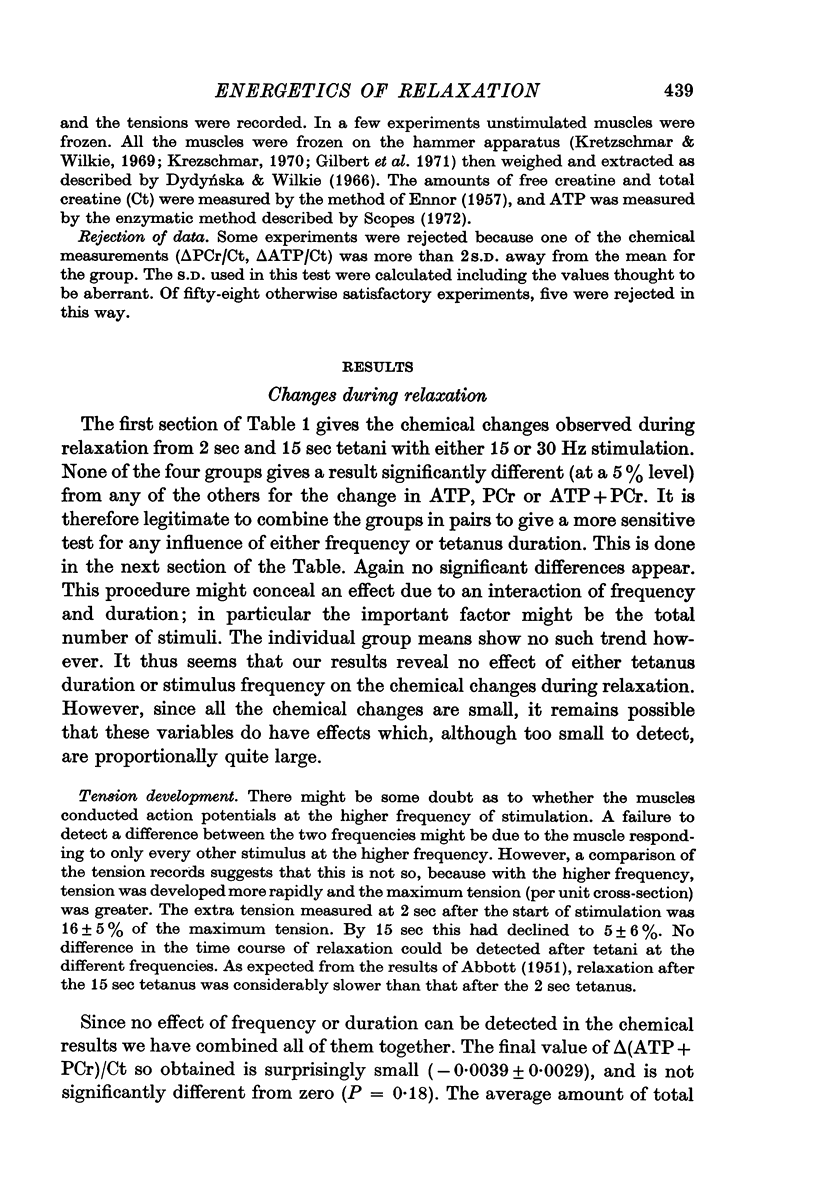
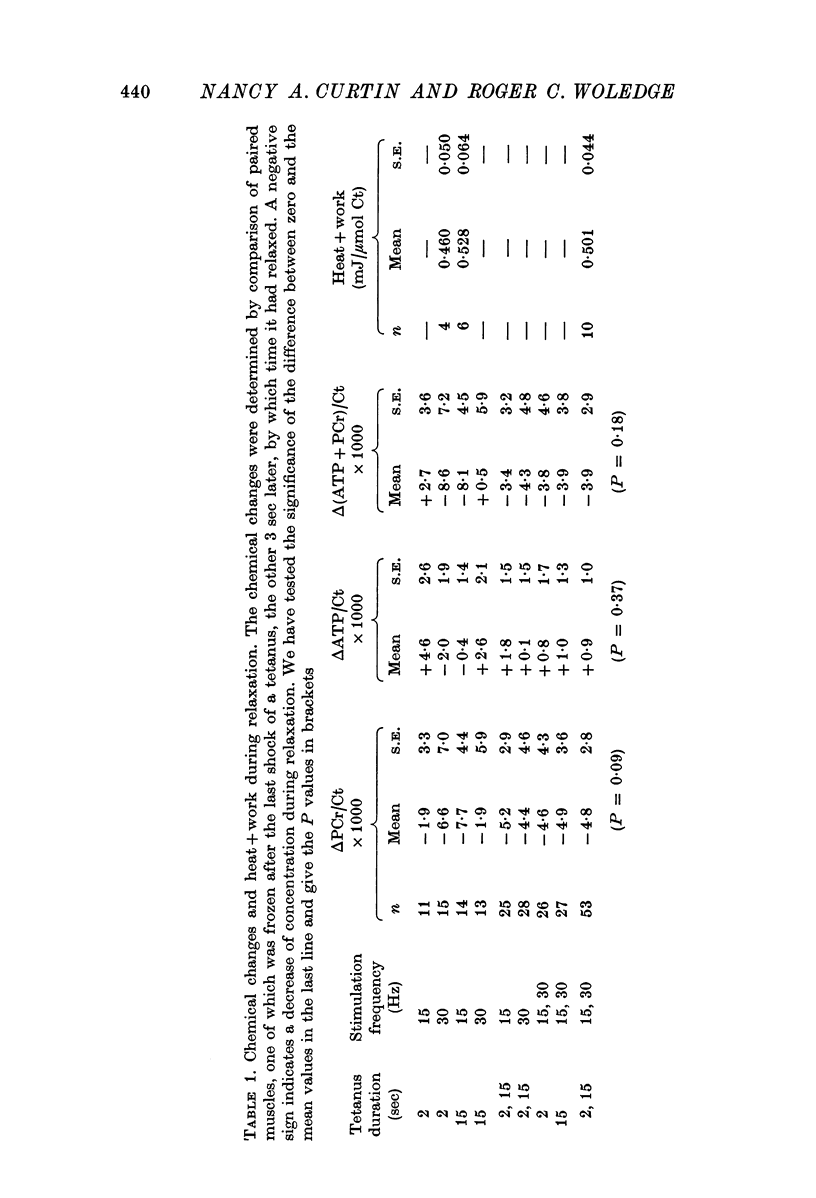
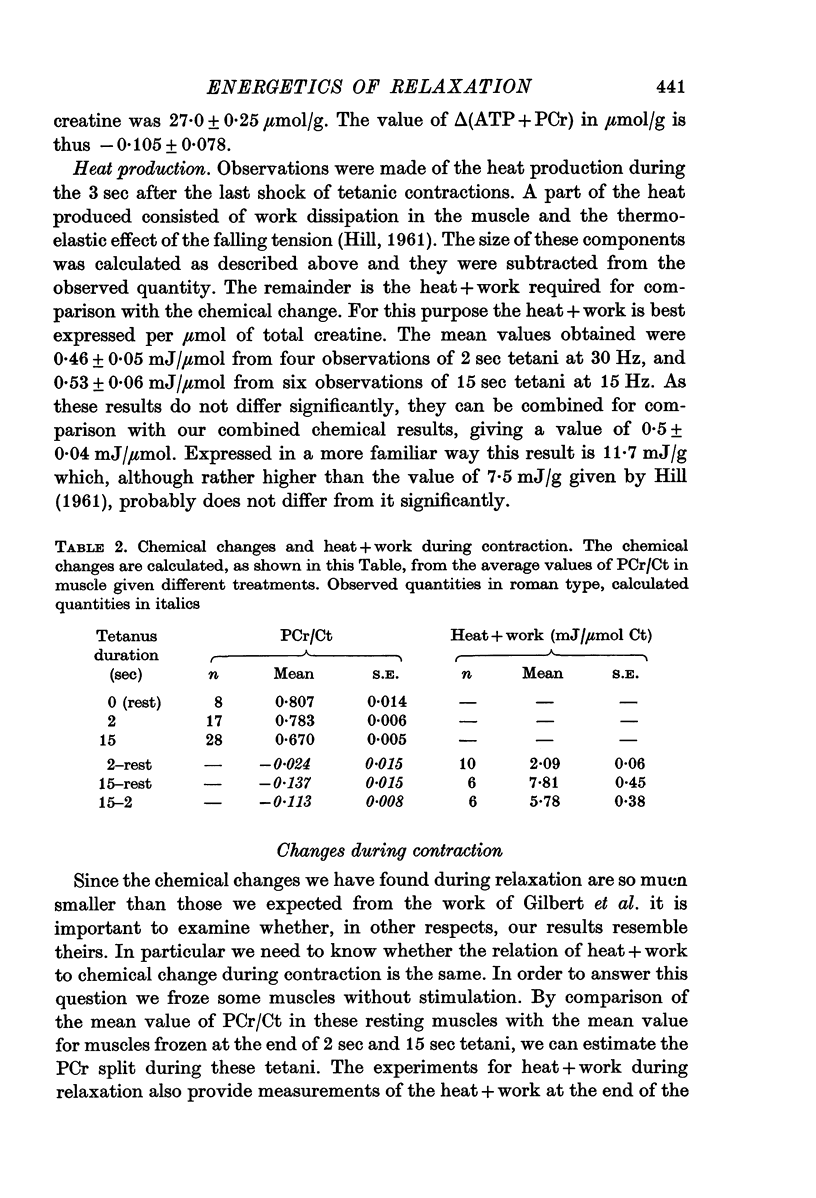
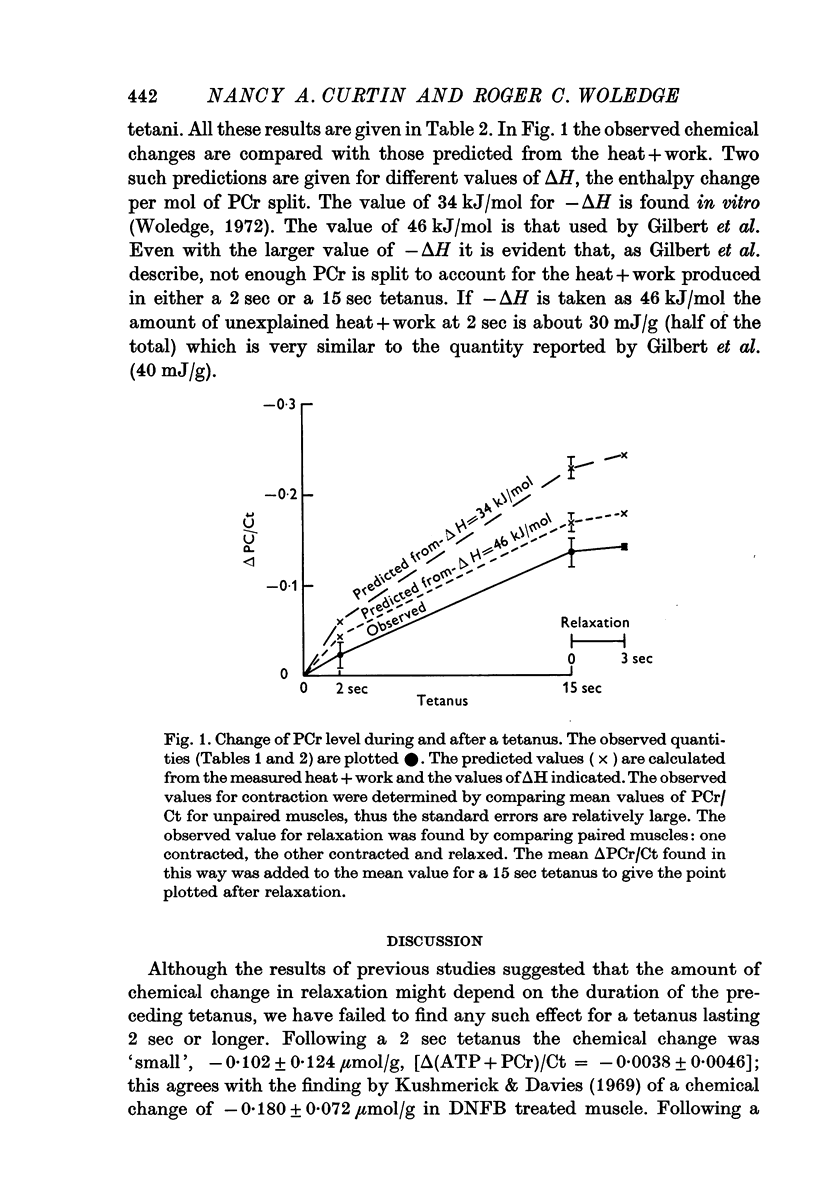
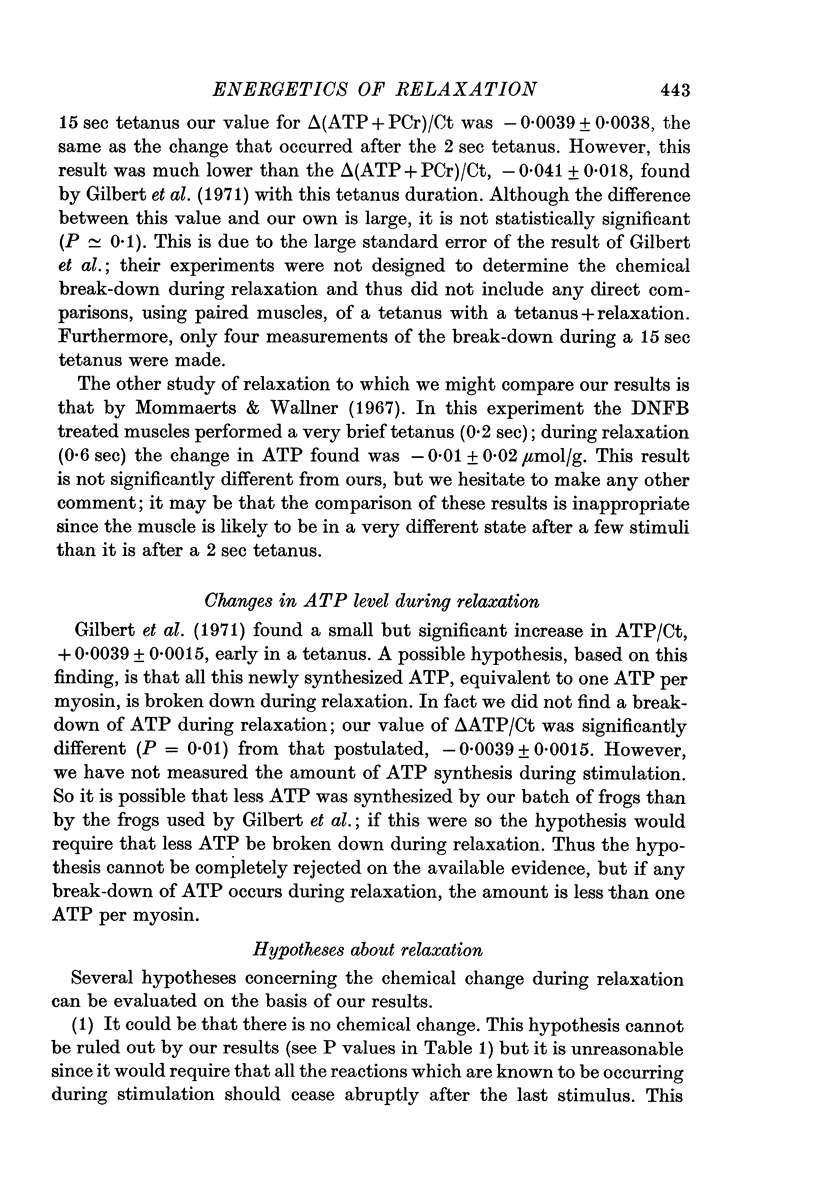
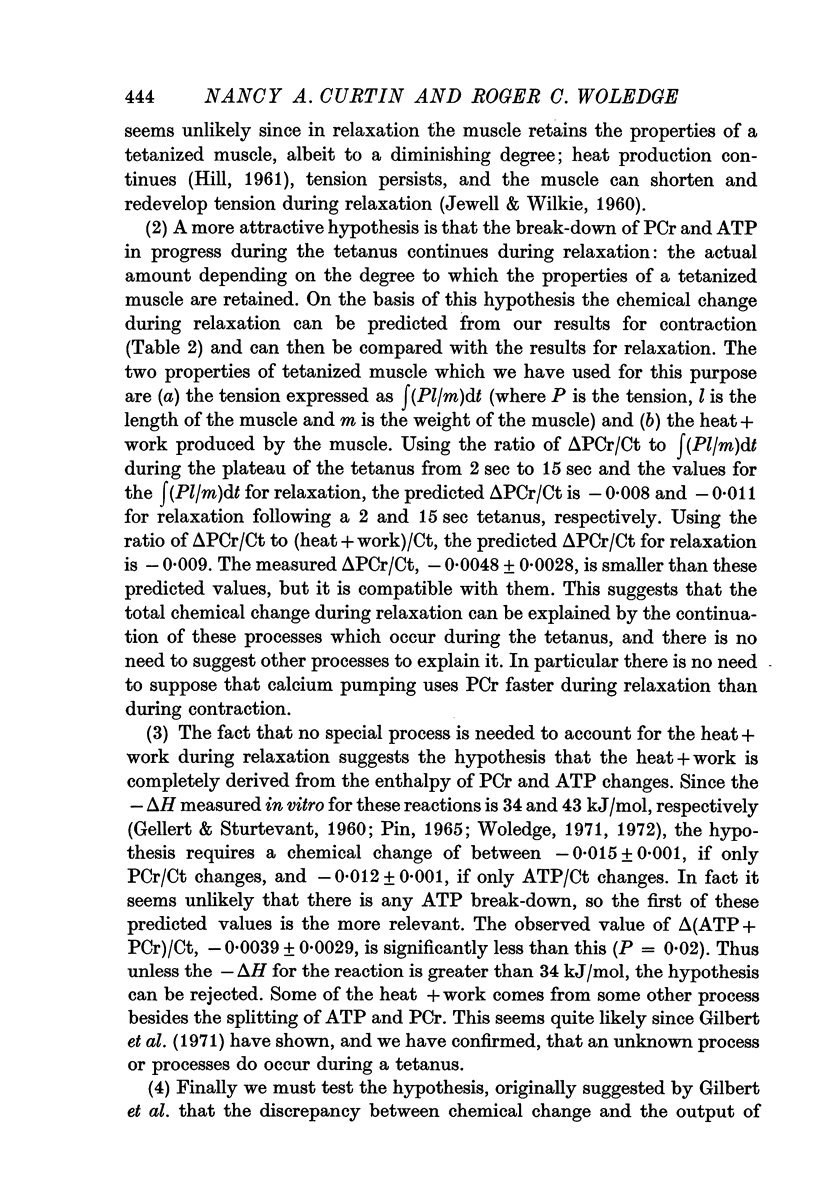
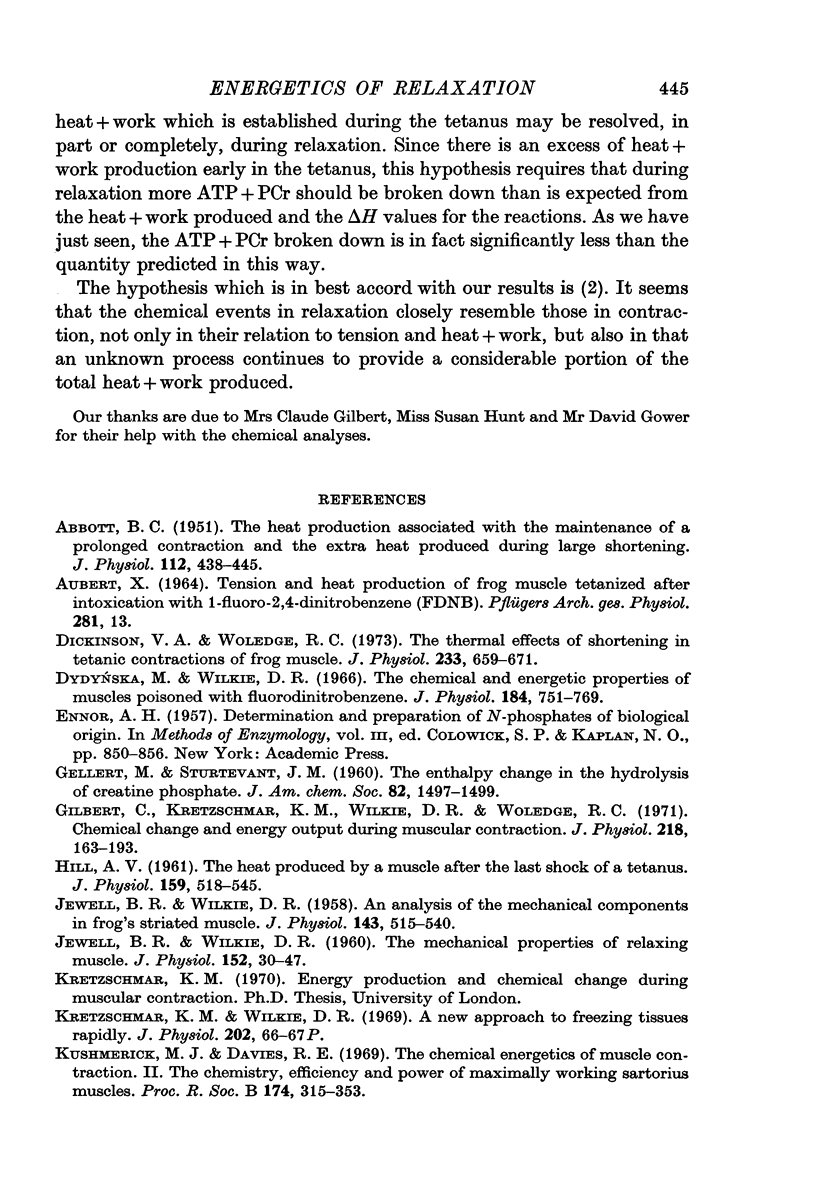
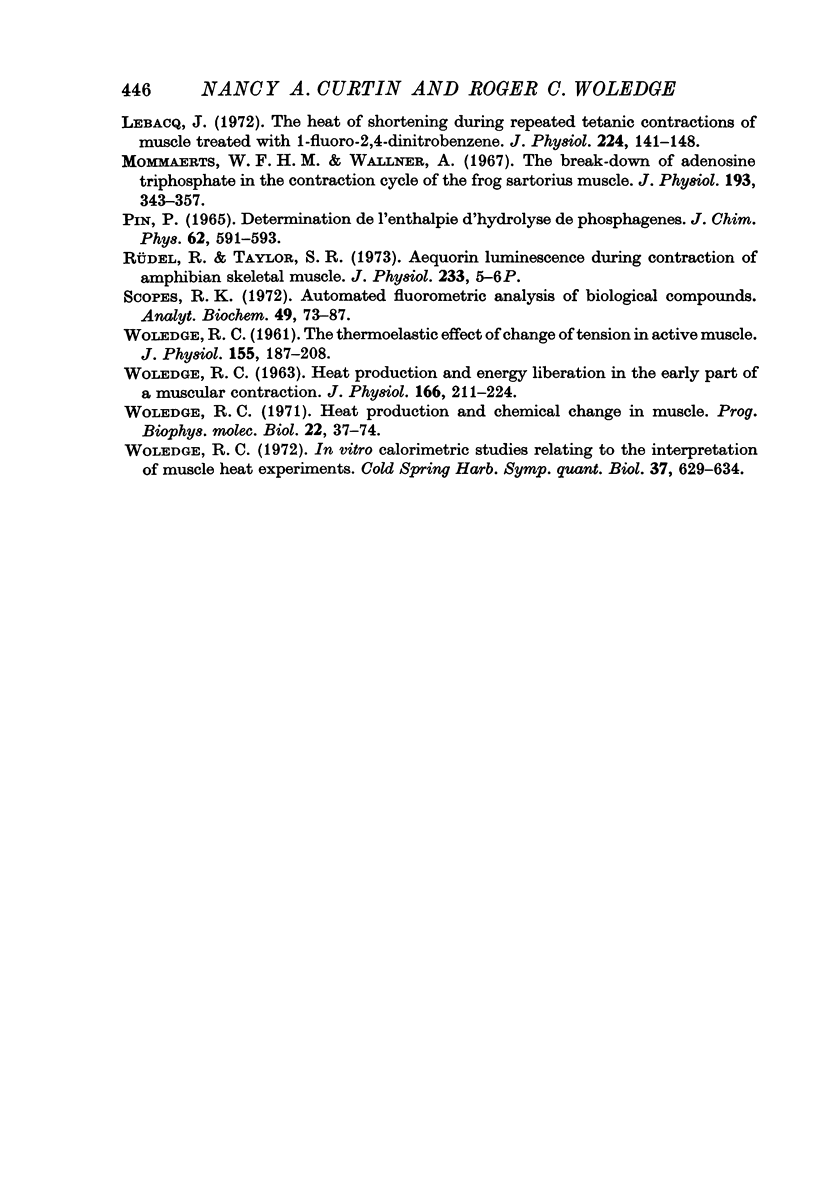
Selected References
These references are in PubMed. This may not be the complete list of references from this article.
- ABBOTT B. C. The heat production associated with the maintenance of a prolonged contraction and the extra heat produced during large shortening. J Physiol. 1951 Feb;112(3-4):438–445. doi: 10.1113/jphysiol.1951.sp004541. [DOI] [PMC free article] [PubMed] [Google Scholar]
- Dickinson V. A., Woledge R. C. The thermal effects of shortening in tetanic contractions of frog muscle. J Physiol. 1973 Sep;233(3):659–671. doi: 10.1113/jphysiol.1973.sp010328. [DOI] [PMC free article] [PubMed] [Google Scholar]
- Dydyńska M., Wilkie D. R. The chemical and energetic properties of muscles poisoned with fluorodinitrobenzene. J Physiol. 1966 Jun;184(3):751–769. doi: 10.1113/jphysiol.1966.sp007946. [DOI] [PMC free article] [PubMed] [Google Scholar]
- Gilbert C., Kretzschmar K. M., Wilkie D. R., Woledge R. C. Chemical change and energy output during muscular contraction. J Physiol. 1971 Oct;218(1):163–193. doi: 10.1113/jphysiol.1971.sp009609. [DOI] [PMC free article] [PubMed] [Google Scholar]
- HILL A. V. The heat produced by a muscle after the last shock of a tetanus. J Physiol. 1961 Dec;159:518–545. doi: 10.1113/jphysiol.1961.sp006825. [DOI] [PMC free article] [PubMed] [Google Scholar]
- JEWELL B. R., WILKIE D. R. An analysis of the mechanical components in frog's striated muscle. J Physiol. 1958 Oct 31;143(3):515–540. doi: 10.1113/jphysiol.1958.sp006075. [DOI] [PMC free article] [PubMed] [Google Scholar]
- JEWELL B. R., WILKIE D. R. The mechanical properties of relaxing muscle. J Physiol. 1960 Jun;152:30–47. doi: 10.1113/jphysiol.1960.sp006467. [DOI] [PMC free article] [PubMed] [Google Scholar]
- Kretzschmar K. M., Wilkie D. R. A new approach to freezing tissues rapidly. J Physiol. 1969 Jun;202(2):66P–67P. [PubMed] [Google Scholar]
- Kushmerick M. J., Davies R. E. The chemical energetics of muscle contraction. II. The chemistry, efficiency and power of maximally working sartorius muscles. Appendix. Free energy and enthalpy of atp hydrolysis in the sarcoplasm. Proc R Soc Lond B Biol Sci. 1969 Dec 23;174(1036):315–353. doi: 10.1098/rspb.1969.0096. [DOI] [PubMed] [Google Scholar]
- Lebacq J. The heat of shortening during repeated tetanic contractions of muscle treated with 1-fluoro-2,4-dinitrobenzene. J Physiol. 1972 Jul;224(1):141–148. doi: 10.1113/jphysiol.1972.sp009885. [DOI] [PMC free article] [PubMed] [Google Scholar]
- Mommaerts W. F., Wallner A. The break-down of adenosine triphosphate in the contraction cycle of the frog sartorius muscle. J Physiol. 1967 Nov;193(2):343–357. doi: 10.1113/jphysiol.1967.sp008361. [DOI] [PMC free article] [PubMed] [Google Scholar]
- Rüdel R., Taylor S. R. Aequorin luminescence during contraction of amphibian skeletal muscle. J Physiol. 1973 Aug;233(1):5P–6P. [PubMed] [Google Scholar]
- Scopes R. K. Automated fluorometric analysis of biological compounds. Anal Biochem. 1972 Sep;49(1):73–87. doi: 10.1016/0003-2697(72)90243-6. [DOI] [PubMed] [Google Scholar]
- WOLEDGE R. C. Heat production and energy liberation in the early part of a muscular contraction. J Physiol. 1963 Apr;166:211–224. doi: 10.1113/jphysiol.1963.sp007101. [DOI] [PMC free article] [PubMed] [Google Scholar]
- WOLEDGE R. C. The thermoelastic effect of change of tension in active muscle. J Physiol. 1961 Jan;155:187–208. doi: 10.1113/jphysiol.1961.sp006622. [DOI] [PMC free article] [PubMed] [Google Scholar]


